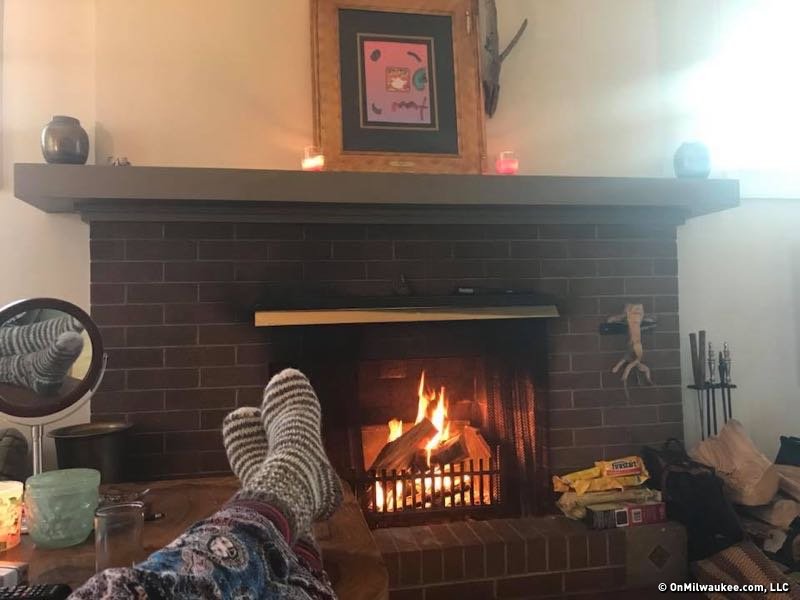 The world of winter has a magic and uniqueness all its own. The long winter season can seem much shorter by embracing it and seeing what's out there. The Schlitz Audubon Nature Center teaching staff spends much of the winter season outside and has mastered the art of staying warm. Don Quintenz, Director of Education at the center, offers the following tips for staying warm on even the coldest days.
The world of winter has a magic and uniqueness all its own. The long winter season can seem much shorter by embracing it and seeing what's out there. The Schlitz Audubon Nature Center teaching staff spends much of the winter season outside and has mastered the art of staying warm. Don Quintenz, Director of Education at the center, offers the following tips for staying warm on even the coldest days.
1. Stay completely dry
Even in an indoor setting, clothing becomes damp after a few hours from the moisture that constantly leaves the surface of the skin. This sets up inevitable heat loss that occurs during the endothermic process of evaporation. Many "miracle" fibers have been invented to deal with this heat-robbing process, but the simplest and most effective way to stay dry is to change clothes just before venturing outside.
2. Cover all parts of the body
From the beginning of being outside, cover all parts of the body -- not just those that normally get cold first. The clothing should envelop the exposed skin areas and be made of fabrics that are effective in trapping air sacs and that stay effective even when wet. If the weather is below freezing, hats should cover both ears. Baseball hats and high-fashion gloves are not the way to go for a day in the snow.
3. Create dead air space
Whether it is in the form of a thick, down-filled jacket or multiple layers of wind-resistant shells, creating dead air space is another key to comfort. The layering approach has the advantage of being able to adjust to getting too warm and becoming sweaty, a dangerous condition for a person who needs to rest while out in the elements.
4. Set the pace with warm footgear
Footgear should be well insulated from the bottom by having a removable liner that can be completely dried between outings. They should also have a high top that can be closed tightly to prevent snow from falling down into the foot area -- gaiters can also accomplish this. Boots that are too tight can slow circulation and cause cold feet, while boots that are too loose do not trap air and lose heat through air circulation. Socks need to be made of a material that will stay effective when wet since feet tend to perspire more than other parts of the body.
5. Don't overheat -- take those pants off
A great way to cover a large part of the body, and not overheat when stops are needed to warm up, is to wear a second pair of pants over a pair you can wear in public. Too often people put on long underwear and pants and become damp from sweat and normal perspiration before they even get outside. Wearing two pairs of pants offers an easy way to adjust in all situations.
6. Face the bitterest days masked
On the bitterly cold days it may be best to stay indoors, but if the temptation to venture out is too strong, consider wearing a facemask. Make sure the mouth opening is large enough to allow moist breath to escape and not dampen the mask.
The Schlitz Audubon Nature Center is a 225-acre environmental education center and nature preserve located on the shore of Lake Michigan about 15 miles north of downtown Milwaukee. Offering seven miles of hiking trails through six ecological areas, the center is open year-'round from 9 a.m.-5 p.m., Tuesday through Sunday. Admission is $4 for adults and $2 for children 12 and under, and memberships are available. The Schlitz Audubon Nature Center is a non-profit, locally supported organization and does not receive funding from state or local tax dollars.







